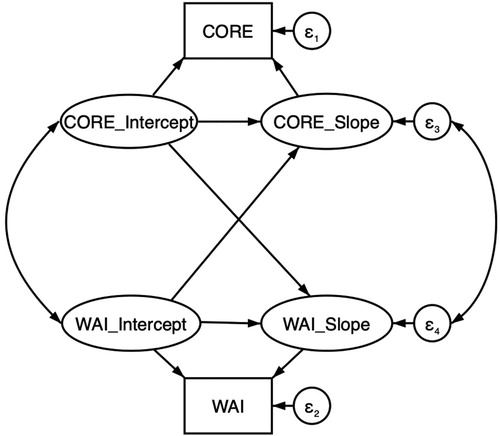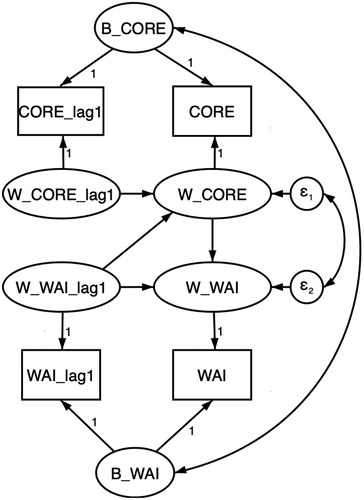Figures & data
Table I. Therapist ratings of patients’ problems/concerns at treatment start (from mild = 1 to severe = 4). For all 99 patients included in this study and also for the 20 patients that agreed to participate but did not complete the forms required to be included.
Table II. Patients’ educational level at treatment start for the 99 patients included in this study and also for the 20 patients that agreed to participate but did not complete the forms required to be included.
Figure 1. Bivariate parallel process growth curve model for CORE-OM and WAI, with regressions among random intercepts and slopes. The observed variables WAI and CORE are predicted by random intercepts and slopes. The random slopes are, in turn, regressed on random intercepts, representing the relationships between initial values and changes over time in each variable. ε1 and ε2 are the within-patient error terms, while ε3 and ε4 are the between-patient residual terms.

Figure 2. Path diagram of Bivariate Dynamic Structural Equation Model of the relationship between alliance (WAI) and psychological distress (CORE). Between-patient components (B_CORE and B_WAI) are estimated as latent variables (random intercepts). Within-patient components are estimated as latent deviation scores (W_WAI and W_CORE), and lagged versions of within-patient components are also estimated as latent variables (W_WAI_lag1 and W_CORE_lag1). Finally, ε1 and ε2 are the within-patient error terms.

